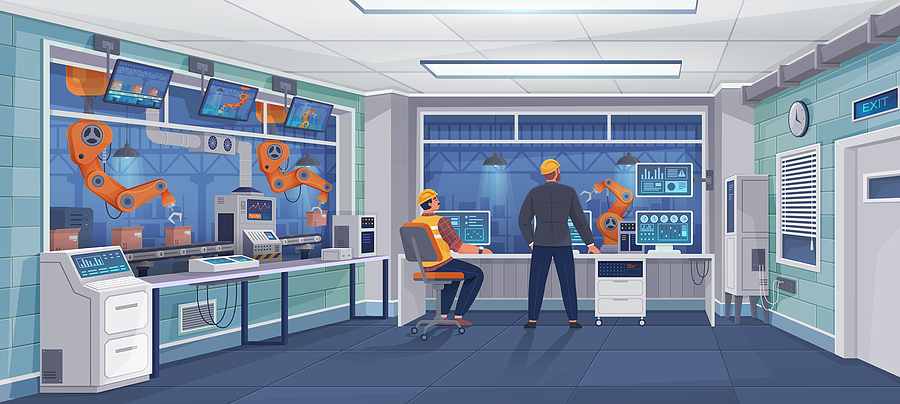
How Supply Chain Technology is Improving the Customer Journey
Supply chain technology has come a long way in the past few years. Improvements in AI technology and deep learning programs can help supply chain managers accurately predict shortages, adapt to current conditions, and operate more efficiently.
Supply chain technology can also be used to improve the customer journey. Effective supply chain management leverages the Internet of Things (IoT) to give consumers greater control over their orders. Emerging technology can also be used to reduce human error, increase operational efficiency, and improve security.
These breakthroughs in technology improve the customer experience and ensure that consumers get the products they want when they need them.
CX and SCM
At first glance, consumer experience (CX) and supply chain management (SCM) seem unrelated. However, as senior sales executive Sven Esser points out “the relationship between CX and SCM is symbiotic.”
Esser goes on to explain that effectively mapping the customer journey is an important facet of effective CX and SCM. Predicting consumer behavior ensures that supply chains are operating as efficiently as possible and that consumers have accurate information about shipping and order fulfillment before they check out.
Esser advocates for a model of SCM that gets to know consumers and uses AI analytics to accurately map and predict the typical consumer journey. This will help businesses connect with consumers’ personal needs and help supply chain managers shift to a more “customer-focused effort.”
Businesses can use AI analytics to map the consumer journey and improve their SCM through Google Analytics (GA4). GA4 is typically used by marketers who want to improve the materials. However, GA4 can also be used to track users from the referral page to the conversion or exit page.
Supply chain managers can work with marketing to get a better picture of the consumer journey and typical behavior. GA4 can be particularly useful for businesses that use the IoT to place orders or improve CX.
The IoT
The Internet of Things (IoT) is revolutionizing industries around the world. Consumers and businesses can use the IoT to link devices and create “smart” networks between products and machines.
The IoT can also improve the efficiency of supply chains by giving businesses an up-to-date assessment of inventory and potential problems. For example, a business that runs an IoT-integrated warehouse will be aware of issues like faulty equipment and disrupted supply lines earlier than competitors who do not leverage the IoT.
IoT-integrated supply chains can improve the consumer journey directly, too. IoT technology makes it easier for customers to place and edit orders. For example, folks who utilize smart home devices like Google Nest or Amazon’s Alexa can place and edit orders with a simple voice command.
Human Error
Emerging technology like AI software and the IoT is designed to improve operational efficiency and streamline the consumer journey. However, human error still threatens to derail business operations and supply chains.
Supply chain managers can reduce the risk of human error in the workplace by automating relevant processes. This is particularly important in warehouse management, where human error may result in injury due to repetitive motions or dangerous working conditions. Automated machines in smart factories and warehouses can take humans out of the firing line and ensure that customers have their orders fulfilled with minimal delays.
Supply chain technology can also improve post-sale communication with consumers. Consumers who have ordered expensive goods want regular updates on the status of their products. Businesses can send out automated emails when the customer’s product has passed production phases and is ready for shipping. Automated communication improves the customer journey by alleviating worries about order fulfillment without derailing operational efficiency.
Operational Efficiency
Operational efficiency is at the heart of a successful customer journey. Customers can tell when all departments are working in unison and will benefit from quicker order fulfillment due to higher efficiency in the workplace.
Maximizing operational efficiency is particularly important for businesses that use Just-in-time (JIT) inventory management. JIT inventory management relies on accurate consumer forecasts and robust supply chain management to ensure that businesses get the inventory they need just when they need it. This can result in major savings, which can be passed onto the consumer or used to otherwise improve the customer journey.
However, for inventory management methods like JIT to work, businesses need to hyperautomate their operations. Hyperautomation allows businesses to “rapidly identify, vet, and automate as many business and IT processes as possible.” Hyperautomation relies on deep learning programs that can successfully capture and utilize massive data sets. This will improve the customer journey, too, as the same data sets can be used to present personalized adverts and products to consumers.
Conclusion
Emerging technology like the IoT can have a direct impact on the customer journey. Consumers today can place, edit, and receive orders using a network of machines and devices that are connected by AI algorithms. Recent upgrades to supply chain technology can also improve operational efficiency and reduce the risk of human error in factories and warehouses. This ensures that consumers receive their orders with minimal delay and at a lower cost.
*This article is written by Ainsley Lawrence. View more of Ainsley’s articles here.





